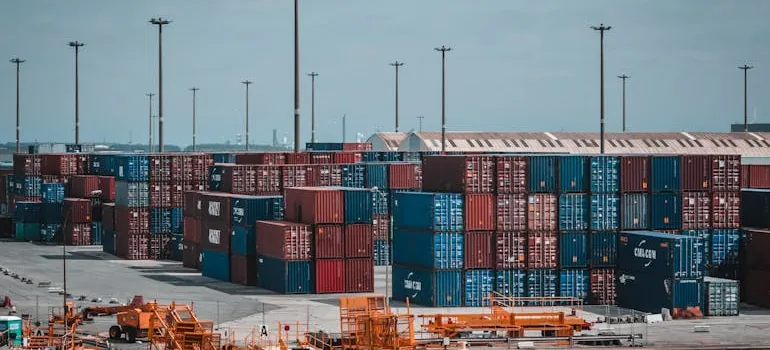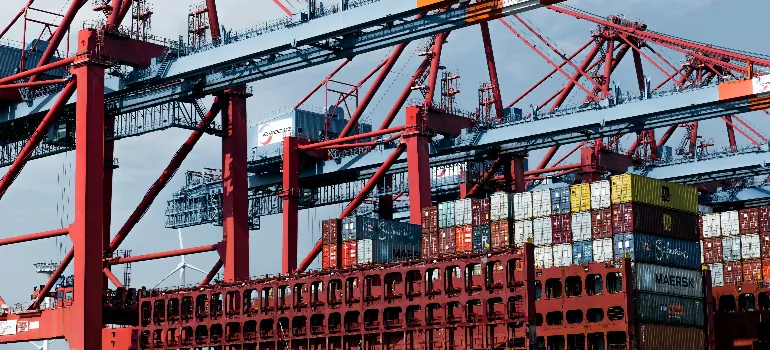The Importance of Cargo Stowage
Let's TalkCargo stowage is very important in the shipping industry. Proper stowage ensures goods are safe and reach their destination without damage. This process involves careful planning and organization, and it cannot be done without the right logistics company in Virginia. If you can understand the basics and challenges of cargo stowage, you can also ensure efficient and secure transportation. This article will explore the importance of cargo stowage, key factors in planning, types of containers, technological advances, benefits, and challenges.
What is Cargo Stowage?
Cargo stowage involves arranging goods in a way that maximizes space and ensures safety. It starts with understanding the type of cargo being transported. Different goods require different stowage methods. For instance, heavy machinery needs to be securely fastened, while fragile items need cushioning. Proper stowage minimizes movement and prevents damage during transit. It also ensures that the cargo is accessible when needed, making loading and unloading more efficient.

Key Factors in Cargo Stowage Planning
Effective stowage planning is crucial for international cargo transportation. Proper planning can prevent accidents and ensure the safe and efficient transport of goods. Here are some important considerations:
The Importance of Cargo Stowage Lies in its Weight Distribution
Weight distribution an important point in cargo stowage. Uneven weight can cause instability, leading to accidents. Heavy items should be placed at the bottom to lower the center of gravity. This helps maintain balance and prevents the vessel from tipping over. Proper weight distribution ensures a smooth and safe journey.
Stacking Weight Restrictions
Each cargo vessel has specific stacking weight restrictions that are crucial to maintaining the integrity of both the vessel and the cargo. Exceeding these limits can lead to significant damage. It is important to understand the weight capacity of each container and the vessel as a whole.
For standard containers, a 20-foot container typically has a maximum gross weight of about 62,150 pounds (28,200 kg), while a 40-foot container can hold up to approximately 67,200 pounds (30,480 kg). The tare weight, which is the empty weight of the container, is about 5,071.5 pounds (2,300 kg) for a 20-foot container and 8,268.8 pounds (3,750 kg) for a 40-foot container.
When stacking containers, it’s essential to avoid placing heavy items on top of lighter ones to prevent the lower containers from collapsing. Proper weight distribution and adherence to these stacking weight restrictions are vital for ensuring the safety of the cargo and the vessel.

Cargo Type Considerations
Different types of cargo have different stowage needs. Hazardous materials need special handling and storage to prevent accidents. Perishable goods require temperature-controlled environments. Understanding the specific needs of each type of cargo is important for safe and efficient stowage. Proper labeling and documentation also help in handling different types of cargo.
Other considerations to keep in mind are:
- Use of tank containers or dedicated tanker vessels for shipping liquid.
- Planning for sufficient space and weight capacity if you have oversized cargo to deal with.
- In case you are shipping automobiles, use roll-on/roll-off vessels or car carriers.
- For live animals, compliance with animal welfare regulations is necessary, as well as constantly monitoring their condition.
- Valuable goods require tracking and monitoring systems.
Vessel Design
The design of the vessel affects cargo stowage. Some vessels are designed for specific types of cargo, such as tankers for liquid cargo or bulk carriers for grain. The layout of the vessel determines how cargo can be arranged. Understanding the vessel’s design helps in planning the stowage process efficiently. It ensures that the cargo fits well and is secure during the journey.
Port Calls and Discharge Sequence
Planning for port calls and discharge sequence is another important aspect of cargo stowage. The order in which cargo is loaded and unloaded affects the stowage plan. Cargo that needs to be unloaded first should be easily accessible. Proper planning reduces handling time and ensures a smooth process at each port. It also minimizes the risk of damage during loading and unloading.
Safety and Risk Management
Proper stowage reduces the risk of accidents and damage. It involves following safety regulations and guidelines. Regular inspections ensure that the cargo is secure. Risk management includes having contingency plans for emergencies. Training for crew members on safety procedures is also crucial. Implementing safety and risk management measures ensures a secure and efficient journey.
Types of Containers and Their Stowage
There are different types of containers used in cargo stowage:
- Standard containers are versatile and used for general cargo.
- Refrigerated containers, or reefers, are used for perishable goods.
- Tank containers carry liquids, while flat rack containers are used for heavy machinery. Each type of container has specific stowage requirements.
Make sure you understand these requirements, so your cargo is secure and safe. Proper container selection and stowage enhance the efficiency of the transportation process.
Technological Advances in Stowage Planning
Technological advances have improved cargo stowage planning. Computerized stowage planning systems help in organizing cargo efficiently. These systems consider factors like weight distribution, vessel design, and discharge sequence. They provide real-time data and updates, helping in making informed decisions. Automation in cargo handling also reduces manual errors and speeds up the process. Technology increases the safety and efficiency of cargo stowage.
Benefits of Proper Cargo Stowage
Proper cargo stowage offers many benefits. It ensures the safety of the cargo and the vessel. Efficient stowage makes more space, reducing transportation costs. It also speeds up loading and unloading, saving time. Proper stowage minimizes the risk of damage, ensuring that goods reach their destination in good condition. It makes the overall efficiency of the shipping process better, leading to better customer satisfaction.

Integration of Warehousing and Storage
Incorporating warehousing and storage solutions into your logistics plan can further enhance the benefits of proper cargo stowage. Effective warehousing ensures that goods are stored safely and efficiently before transportation. Proper storage practices in warehouses can help in maintaining the quality and condition of the cargo, reducing the risk of damage. By combining efficient stowage on vessels with strategic warehousing, you can optimize the entire logistics process, ensuring timely and cost-effective delivery of goods.
Challenges in Cargo Stowage
Cargo stowage comes with its challenges as well. Along with ensuring different stowage requirements, proper weight distribution and stacking restrictions, there are other things to pay attention to. For example, weather conditions can affect the safety of the cargo during transit. Coordinating port calls and discharge sequences requires careful planning. Despite these challenges, proper stowage is essential for safe and efficient transportation. Overcoming these challenges involves continuous learning and adapting to new methods and technologies.
Ensuring the Right Stowage is Not Hard with the Right Assistance
Cargo storage is a crucial aspect of the shipping industry. Understanding the basics, planning for key factors, ensuring safety, and utilizing technology are essential for efficient stowage. Despite the challenges, the benefits of proper cargo stowage are significant. It ensures the safety of goods, reduces costs, and enhances overall efficiency. Effective stowage practices are key to successful cargo transportation, ensuring that goods reach their destination safely and on time. Partnering with experienced logistics companies like Interstate Logistics can ensure that your goods are taken care of, as we understand the importance of cargo stowage in the shipping process.
